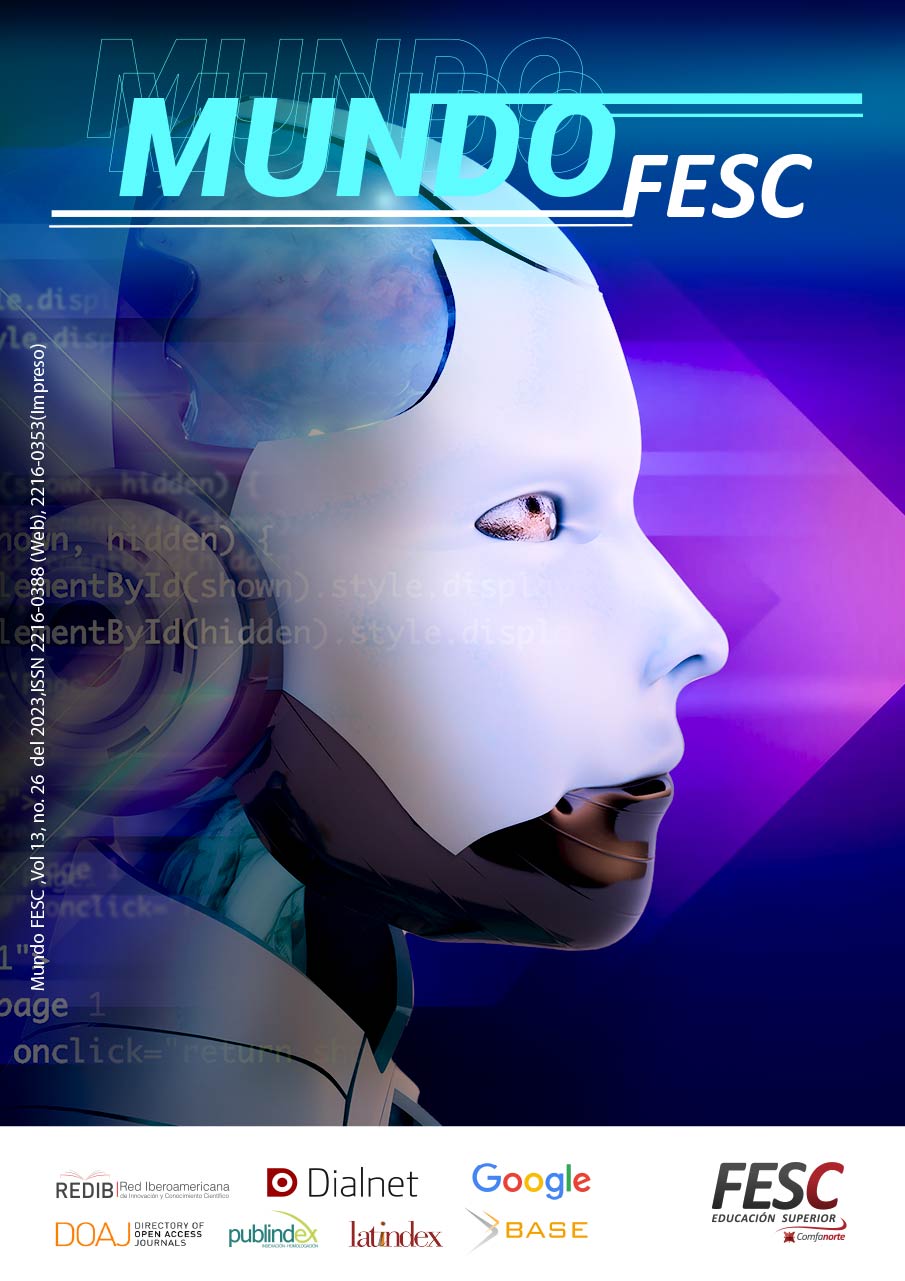Preferencias en consumo de alimentos de la Canasta Básica Alimentaria (CBA) en Pamplona, Colombia.
DOI:
https://doi.org/10.61799/2216-0388.1528Palabras clave:
Alimentos, canasta básica, consumo, proyecciónResumen
Cada día, los seres humanos consumen productos que conforman la canasta básica (CBA), por lo tanto, resulta fundamental que los mercados estén debidamente abastecidos para satisfacer las necesidades de la población. Esto subraya la importancia de recopilar estadísticas que permitan evaluar el nivel de consumo de alimentos de la CBA en el municipio de Pamplona. Con este propósito, se llevó a cabo un estudio transversal que abarcó una muestra representativa y aleatoria de 1080 hogares en la zona urbana en Pamplona, Colombia. Se aplicó una encuesta estructurada, basada en los alimentos que conforman la canasta básica. Las respuestas se analizaron con el fin de evaluar tanto la cantidad como la frecuencia del consumo de cada alimento, con el propósito de calcular el volumen mensual de cada producto alimenticio y realizar las proyecciones anuales de demanda. El consumo de productos de la canasta básica alimentaria en los hogares de Pamplona se centra en un conjunto de 100 alimentos, lo que da lugar a un dispendio caracterizado por una amplia variedad de tipos de alimentos. En la exploración, se destacaron notables diferencias en la cantidad consumida de diversos grupos de alimentos, lo que plantea desafíos significativos en términos de la calidad y el valor nutricional de la dieta de la población.
Descargas
Referencias
FAO, “Alimentación y agricultura sostenibles”, Food and Agriculture Organization of the United Nations. [En línea]. Disponible en: http://www.fao.org/sustainability/es/
J. Alvarado, Principios de Ingeniería Aplicados en Alimentos (2da. ed.). 2014
L. Antonio, “Desafíos actuales en la ingeniería de alimentos: una visión general”, Todo Ingenierías. [En línea]. Disponible en: https://todoingenierias.com/desafios-actuales-en-la-ingenieria-de-alimentos-una-vision-general/
Universidad de Ecuador, “Ingenierías en Alimentos”, [En línea]. Disponible en: https://www.universidades.com.ec/explorar/alimentos-ingenierias-z-y-x-5-1153-2
Todosayudan, “La Declaración del Nuevo Milenio de Naciones Unidas promueve 8 Objetivos del Nuevo Milenio”. [En línea]. Disponible en: https://www.todosayudan.com/objetivos-del-nuevo-milenio-de-naciones-unidas-onu/
R. Miranda, Metodología de la Canasta Básica Alimentaria (CBA) para la construcción de líneas de pobreza, Naciones Unidas, 2023
FAO, What is hidden hunger? (30 de octubre de 2014). [En línea]. Disponible en: https://www.youtube.com/watch?v=Sgm4gzc3B8U
A. Marti, C. Calvo, A. Martínez, A. Marti, C. Calvo, y A. Martínez, “Consumo de alimentos ultraprocesados y obesidad: una revisión sistemática”, Nutrición Hospitalaria, vol. 38, n.o 1, pp. 177-185, feb. 2021, doi: 10.20960/nh.03151
L. F. Vélez, “La selección de los alimentos: una práctica compleja”, Colombia Médica, vol. 34, no. 2, 2003
C. M. Hidalgo Víquez et al., “Análisis de la canasta básica alimentaria de Costa Rica: oportunidades desde la alimentación y nutrición”, PSM, jun. 2020, doi: 10.15517/psm.v18i1.40822
C. E. para A. L. y el Caribe, “Objetivos de Desarrollo Sostenible (ODS)”, [En línea]. Disponible en: https://www.cepal.org/es/temas/agenda-2030-desarrollo-sostenible/objetivos-desarrollo-sostenible-ods
DANE, “Proyecciones del DANE para 2022 con base en el censo de 2018”, 2022. [En línea]. Disponible en: https://www.dane.gov.co/index.php/estadisticas-por-tema/demografia-y-poblacion/proyecciones-de-poblacion
CEPAL, “Objetivos de Desarrollo Sostenible (ODS)”, [En línea]. Disponible en: https://www.cepal.org/es/temas/agenda-2030-desarrollo-sostenible/objetivos-desarrollo-sostenible-ods
DANE, “Información del DANE para la toma de decisiones en departamentos y ciudades capitales”, [En línea]. Disponible en: https://www.dane.gov.co/index.php/estadisticas-por-tema/informacion-regional/informacion-estadistica-desagregada-con-enfoque-territorial-y-diferencial/informacion-del-dane-para-la-toma-de-decisiones-en-departamentos-y-ciudades-capitales?highlight=WyJjb2xvbWJpYSIsImNvbG9tYmlhbiIsInBvYmxhY2lcdTAwZXMiLCJwb3IiLCJwb3Jvc2FzIiwibXVuaWNpcGlvcyIsIm11bmljaXBpbyJd
ICBF, “Aprendamos sobre el Plato Saludable de la Familia Colombiana”, Portal ICBF - Instituto Colombiano de Bienestar Familiar ICBF. [En línea]. Disponible en: https://www.icbf.gov.co/mis-manos-te-ensenan/aprendamos-sobre-el-plato-saludable-de-la-familia-colombiana
Bienestar Familiar, «Aprendamos sobre el Plato Saludable de la Familia Colombiana», Portal ICBF - Instituto Colombiano de Bienestar Familiar ICBF. Accedido: 31 de julio de 2024. [En línea]. Disponible en: https://www.icbf.gov.co/mis-manos-te-ensenan/aprendamos-sobre-el-plato-saludable-de-la-familia-colombiana
P. C. Jaime, y D. C. Parra, “Sociodemographic factors associated with the consumption of ultra-processed foods in Colombia”, Revista de Saúde Pública, vol. 54, pp. 19-19, feb. 2020, doi: 10.11606/s1518-8787.2020054001176
DANE, “Informes de Estadística Sociodemográfica Comportamiento de los componentes demográficos en Colombia en 2021 a partir de la Gran Encuesta Integrada de Hogares - GEIH y la Encuesta Nacional de Calidad de Vida – ENCV”, [En línea]. Disponible en: https://www.dane.gov.co/files/investigaciones/poblacion/informes-estadisticas-sociodemograficas/comportamiento-demog-2021GEIH%20y%20ENCV230223.pdf
Banco Mundial, “Crecimiento de la población (%) anual – Colombia 2022”, [En línea]. Disponible en: https://datos.bancomundial.org/indicador/sp.pop.grow?locations=CO
NU CEPAL, “Objetivos de Desarrollo del Milenio: una mirada desde América Latina y el Caribe - Red de Desarrollo Social de América Latina y el Caribe (ReDeSoc)”, ONU. [En línea]. Disponible en: https://dds.cepal.org/redesoc/publicacion?id=2431
Descargas
Publicado
Número
Sección
Licencia
Derechos de autor 2023 Mundo FESC

Esta obra está bajo una licencia internacional Creative Commons Atribución-NoComercial 4.0.






